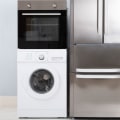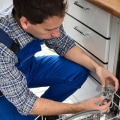It's no secret that appliances break down more often than we'd like. But why is this the case? Part of the reason is due to the nature of their work. Components come into contact with water and the spin cycle can be particularly harsh, especially when dealing with heavy loads. Additionally, appliance manufacturers are struggling to keep up with changing consumer demands.
As technology becomes more efficient, people expect certain features from the products they purchase. Consumers want their appliances to be lightweight, compact and stylish. However, it's difficult for manufacturers to meet these requirements while still producing sturdy machines. The new components they use are inherently more delicate and their lightness makes them more fragile.
This doesn't mean that all new generation appliances are bad, however. In fact, they have a lot of advantages. For example, big sellers of used appliances provide a great experience and are on the front lines when it comes to deciding which appliances are worth reconditioning and maintaining in the system, and which ones need to be recycled in the junkyard. Proper use of appliances and regular maintenance also play an important role in their service life and frequency of repairs.
According to Consumer Reports, these are some of the most common appliance problems and repairs with data that supports the results. In order to improve the situation, changes need to be made in two main areas; the quality of new appliances and the experience of buying used appliances. Taking the time to do regular oven and dishwasher maintenance can help you maximize these appliances and avoid costly repairs. With proper care, your appliance is likely to last much longer than the average life expectancy prescribed for new appliances today. Learn more about life expectancy of major appliances & create a budget for the home using the American Home Shield appliance life expectancy chart.






